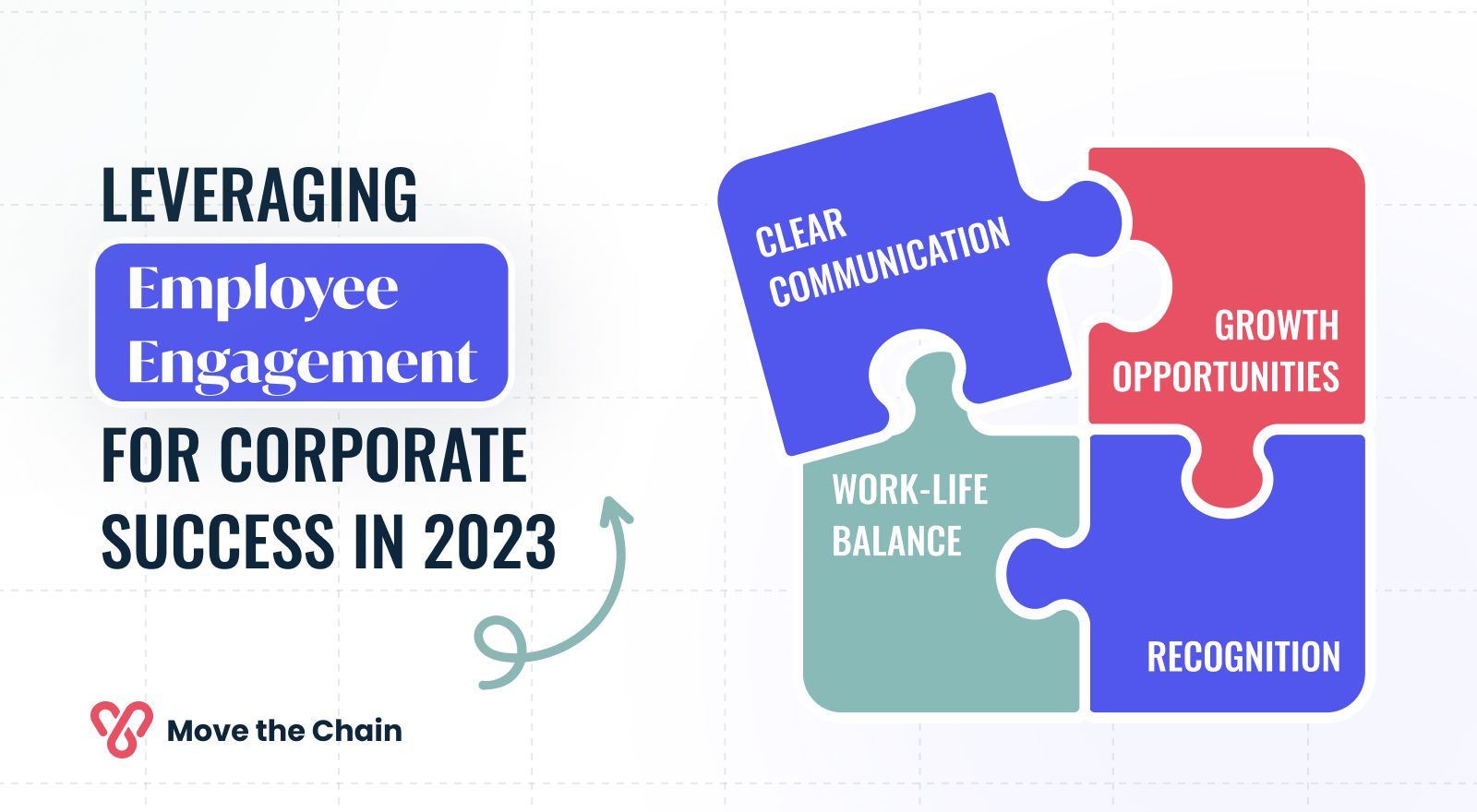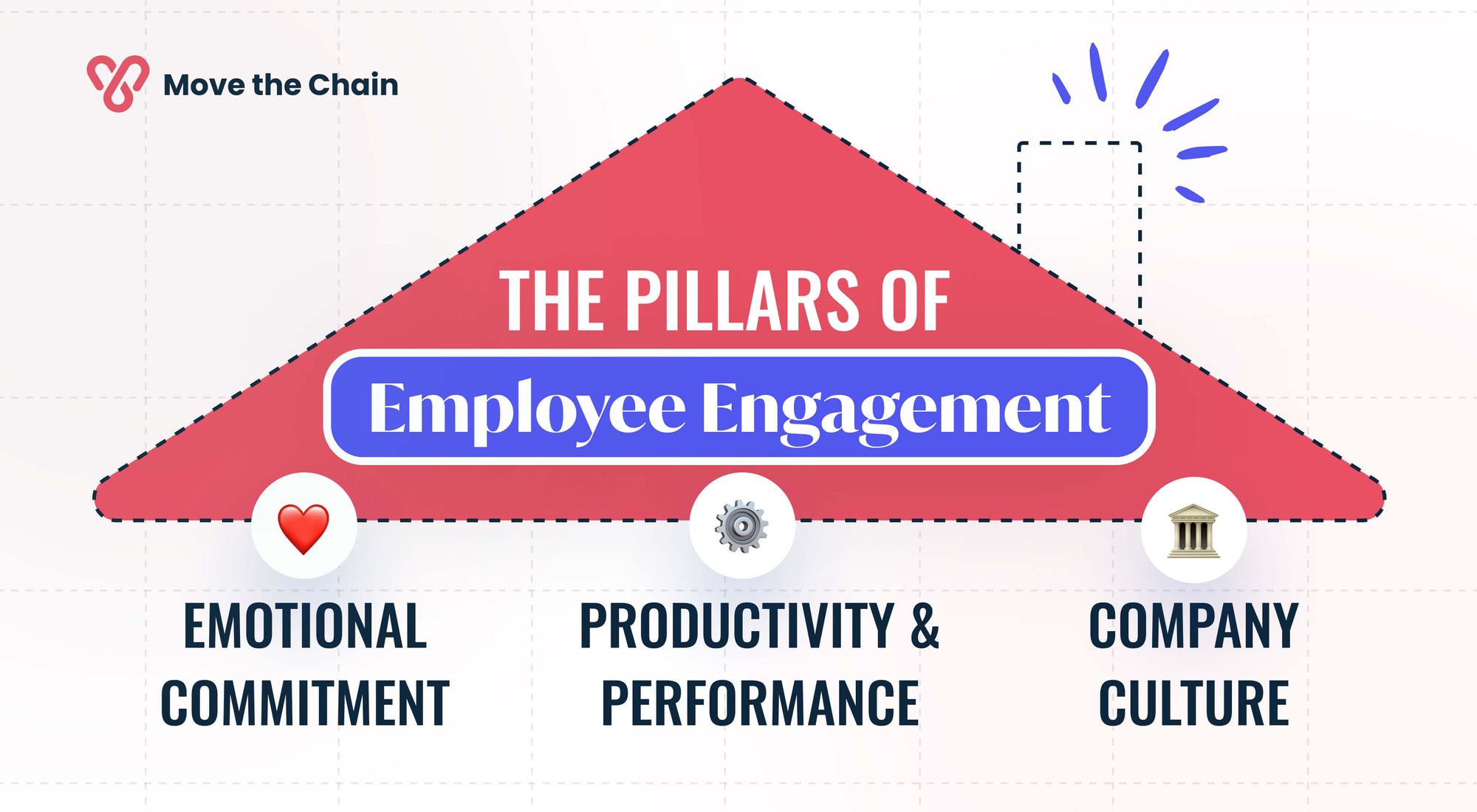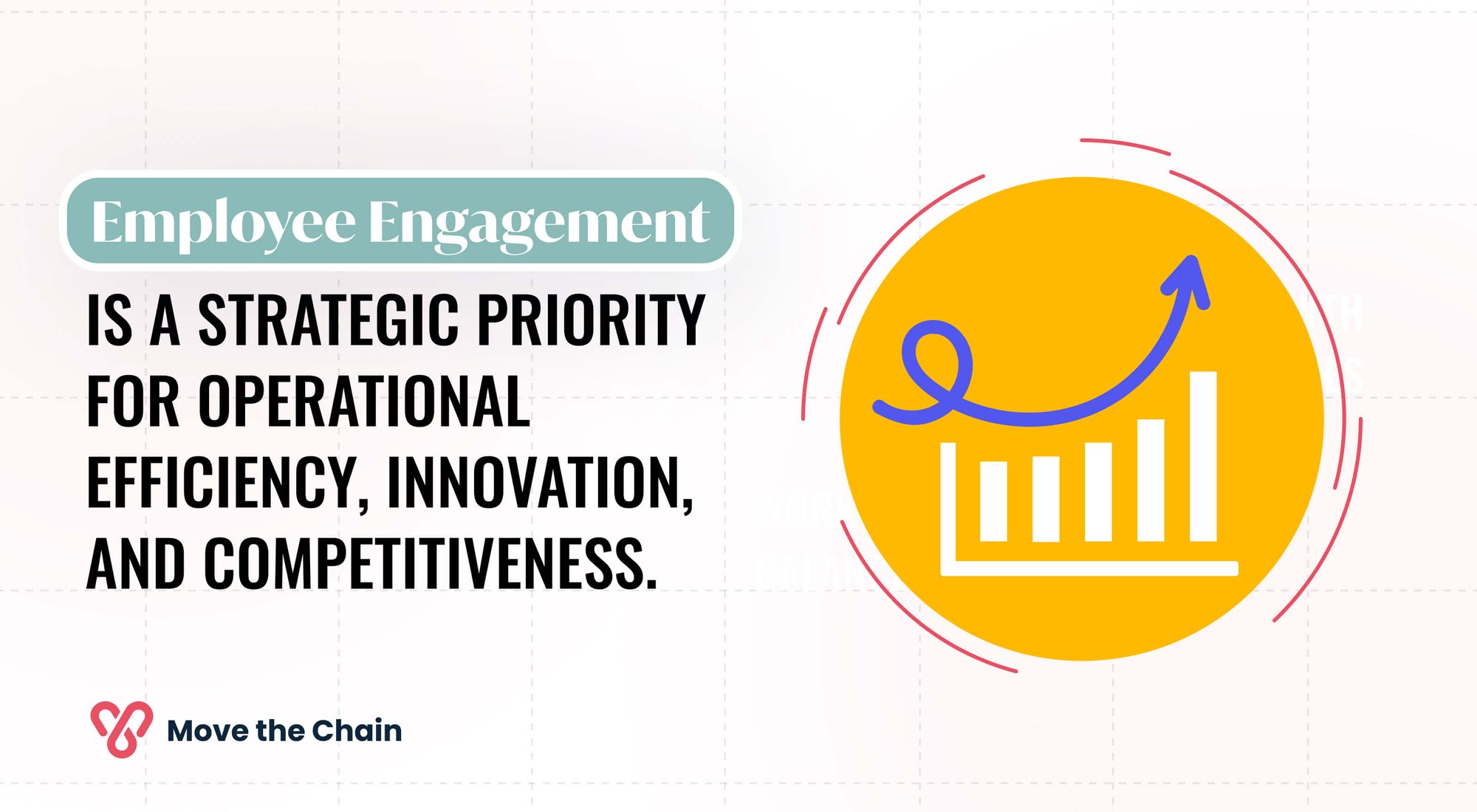Leveraging Employee Engagement for Corporate Success in 2023

Understanding Employee Engagement in 2023: Strategies for Corporate Success
In the dynamic corporate landscape of 2023, one factor has emerged as a non-negotiable cornerstone for business success - Employee Engagement. As we navigate the complexities of the modern workplace, marked by the rise of remote work, digital transformations, and an increasingly diverse workforce, the role of employee engagement has become more pronounced than ever.
Employee engagement is no longer an abstract concept or a peripheral HR initiative. It is a strategic business priority that directly influences a company's operational efficiency, innovation capacity, and overall market competitiveness. In the business lexicon of 2023, employee engagement is synonymous with corporate resilience and growth.
Engaged employees are the powerhouse of a thriving organization. They bring more than just skills and experience to the table; they bring a deep-seated commitment to their roles and the company's vision. They are the catalysts of innovation, the drivers of productivity, and the ambassadors of corporate culture. Their engagement transcends the boundaries of their job descriptions, influencing everything from talent acquisition and retention to customer satisfaction and brand reputation.
Our focus? To unveil the multifaceted world of employee engagement, exploring its strategic importance for business professionals, the tangible benefits it delivers to corporations, and the best practices for cultivating it in the workplace. It's not just mere theories, but actionable insights that empower you with the wisdom to harness employee engagement as a dynamic force for corporate triumph in 2023 and beyond.
Understanding Employee Engagement: What Does it Mean in 2023?
Employee Engagement Explored: More Than Just a Definition
In the context of the evolving business environment of 2023, employee engagement takes on a nuanced and multi-dimensional meaning. It is not merely about job satisfaction or a positive work attitude. Employee engagement is the profound connection that employees feel towards their organization, a connection that motivates them to voluntarily invest their best efforts in work.
Engaged employees view their roles as more than just jobs. They see them as integral parts of their identities and their contributions as vital to the organization's success. They are not just fulfilling their job descriptions; they are actively participating in the company's mission, aligning their personal goals with the strategic objectives of the organization.
Emotional Commitment of Engaged Employees
The emotional commitment of engaged employees is a powerful asset for any organization. It is this commitment that drives employees to go beyond their basic job requirements and contribute their creativity, innovation, and discretionary effort to their work.
In 2023, this emotional commitment is more critical than ever. In an era where remote and hybrid work models are prevalent, the physical distance between employees and their workplaces makes their emotional connection to the organization even more vital. Engaged employees, despite the physical distance, feel a strong sense of belonging to their teams and the organization. They are emotionally invested in their work, leading to higher levels of productivity, improved quality of work, and a greater willingness to take on challenges and responsibilities.
This emotional commitment also manifests in their interactions with customers, colleagues, and stakeholders. Engaged employees are more likely to deliver exceptional customer service, foster collaborative relationships, and represent the company positively, all of which contribute to a stronger corporate reputation and enhanced business performance.
In essence, understanding and fostering employee engagement is not just a human resources initiative; it's a strategic business imperative that can significantly impact an organization's success in 2023 and beyond.
What is the Role of Employee Engagement in Corporate Success?
Impact on Productivity and Performance
In the corporate world of 2023, employee engagement is a significant driver of productivity and performance. Engaged employees, with their high levels of motivation and commitment, are often the most productive members of an organization. They are more likely to take initiative, seek innovative solutions, and consistently deliver high-quality work. This increased productivity directly contributes to improved operational efficiency and business performance, giving companies a competitive edge in the market.
Role in Recruitment and Retention
Employee engagement plays a crucial role in both attracting and retaining top talent. Engaged employees often become brand ambassadors for their organizations, their positive experiences and enthusiasm serving as a powerful recruitment tool. Moreover, organizations with high levels of employee engagement tend to have lower turnover rates. When employees feel valued and engaged, they are less likely to seek opportunities elsewhere, leading to a more stable, experienced, and skilled workforce.
Connection with Customer Satisfaction
The link between employee engagement and customer satisfaction is undeniable. Engaged employees, who feel a strong emotional connection to their organization, are more likely to go the extra mile in providing exceptional customer service. Their commitment to the organization translates into a commitment to its customers, leading to higher levels of customer satisfaction, loyalty, and ultimately, increased customer retention rates.
Influence on Company Culture
Employee engagement significantly influences company culture. Engaged employees contribute to a positive and collaborative work environment, fostering a culture of mutual respect, innovation, and shared success. This positive culture, in turn, further enhances employee engagement, creating a virtuous cycle that benefits both the employees and the organization.
Financial Benefits of High Levels of Employee Engagement
The financial implications of employee engagement are significant. Numerous studies have shown a direct correlation between high levels of employee engagement and improved financial performance. Engaged employees drive productivity, innovation, and customer satisfaction, all of which contribute to increased revenue. Additionally, high engagement levels can lead to lower turnover rates, reducing the costs associated with recruitment, training, and lost productivity. In the competitive business environment of 2023, fostering employee engagement is not just beneficial—it's essential for financial success and sustainability.

Key Statistics on Employee Engagement in 2023
Global Engagement Levels: According to Gallup, only 21% of employees worldwide fall into the "engaged" category. This statistic underscores the vast potential for improvement in employee engagement across various industries and regions.
Impact on Business Outcomes: When comparing employee engagement levels, Gallup found significant differences in business outcomes between top- and bottom-quartile business units and teams. For instance, high engagement levels corresponded with 81% lower absenteeism, 18% higher productivity, and 23% higher profitability. These figures demonstrate the tangible benefits of fostering a highly engaged workforce.
Role of Managers in Engagement: Another key finding from Gallup's research is that 70% of the variance in team engagement is determined solely by the manager. This highlights the critical role that managers play in shaping employee engagement and underscores the need for effective leadership and management practices.
Engagement and Employee Retention: High levels of employee engagement also have a significant impact on employee retention. According to the same Gallup study, high- turnover organizations saw an 18% reduction in turnover with higher employee engagement, while low-turnover organizations saw a 43% reduction.
Engagement and Safety: The study also found that high levels of employee engagement led to a 64% reduction in safety incidents, emphasizing the role of engagement in creating a safer and more harmonious work environment.
Best Practices for Enhancing Employee Engagement: What Works in 2023?
In the dynamic corporate environment of 2023, fostering employee engagement requires a strategic, multifaceted approach. Here are some best practices that have proven effective in enhancing employee engagement:
Clear Communication and Goal Setting
In an era marked by rapid change and uncertainty, clear communication has never been more critical. Business professionals must ensure that every team member understands the company's vision, mission, and strategic objectives. This involves setting clear, measurable goals for each employee and explaining how their individual contributions align with the organization's broader objectives. Regular team meetings, one-on-one check-ins, and transparent communication channels can facilitate this process.
Growth and Development Opportunities
Today's employees seek more than just a paycheck—they want opportunities to learn, grow, and advance in their careers. Offering robust professional development programs, mentorship opportunities, and clear career progression paths can significantly enhance employee engagement. Encourage employees to identify their career aspirations and provide the resources and support they need to achieve these goals.
Recognition and Rewards
Recognizing and rewarding employees for their hard work and achievements is a powerful way to boost engagement. This could involve formal recognition programs, performance- based bonuses, or simply a heartfelt thank-you note. A recognition is always effective when it's timely, specific, and tied to the employee's efforts and accomplishments.
Promoting Work-Life Balance and Flexible Work Options
In 2023, work-life balance is not just a buzzword—it's a key determinant of employee engagement. Flexible work arrangements, such as remote work options and flexible hours, can help employees balance their professional and personal responsibilities. Moreover, promoting a culture that values downtime and discourages overwork can prevent burnout and enhance overall engagement.
Open Communication and Employee Voice
Encouraging open dialogue and actively seeking employee feedback can make employees feel heard and valued. Regular employee surveys, suggestion boxes, and open-door policies can provide valuable insights into employee needs and concerns. Importantly, leaders must be responsive to this feedback and take concrete steps to address any issues raised.
Positive, Inclusive Company Culture
A positive, inclusive company culture is the bedrock of employee engagement. This involves fostering a work environment where employees feel respected, valued, and included, regardless of their background or identity. Regular team-building activities, diversity and inclusion initiatives, and policies that promote respect and fairness can contribute to a positive company culture.
In 2023, enhancing employee engagement requires a holistic approach that addresses various aspects of the employee experience. By implementing these best practices, business professionals can foster a highly engaged workforce that drives productivity, innovation, and corporate success.
How to Measure Employee Engagement Effectively?
In the data-driven business environment of 2023, measuring employee engagement is not just about gathering data; it's about gaining actionable insights that can drive strategic decision-making. Here are some effective methods for measuring employee engagement:
Annual Engagement Surveys
Regular engagement surveys are a staple in many organizations' measurement toolkits. These surveys typically cover a range of topics, from job satisfaction and career development to leadership effectiveness and company culture. The key to effective engagement surveys is to ask the right questions, ensure anonymity, and take action based on the results.
Productivity Metrics
Productivity metrics, such as sales figures, project completion rates, or customer
satisfaction scores, can provide indirect measures of employee engagement. High levels of engagement often translate into increased productivity, so tracking these metrics can offer valuable insights into your engagement efforts.
Tracking Retention and Turnover Rates
Retention and turnover rates are another useful measure of employee engagement. High turnover rates can indicate low engagement levels, as disengaged employees are often more likely to leave the organization. Conversely, high retention rates can suggest that employees are engaged and committed to the company.
Connection between Absenteeism and Employee Engagement
Absenteeism can be a telling sign of disengagement. If employees are frequently absent or taking sick days, it may indicate that they are disengaged or dissatisfied. Tracking absenteeism rates and looking for patterns can help identify potential engagement issues.
Feedback from Exit Interviews
Exit interviews offer a unique opportunity to gain insights into employee engagement. When employees leave the company, they often provide candid feedback about their experiences, including their level of engagement. Analyzing this feedback can reveal common themes or issues that may be impacting engagement.
Observing Employee Behavior and Company Culture
Sometimes, the most valuable insights come from simply observing day-to-day behaviors and interactions. Are employees enthusiastic and collaborative? Do they participate in company events and initiatives? Do they demonstrate a strong commitment to their work and the company's values? These behaviors can provide a real-time snapshot of employee engagement levels.
In 2023, measuring employee engagement is a complex process that requires a combination of quantitative and qualitative methods. By leveraging these methods, business professionals can gain a deeper understanding of their employees' engagement levels and identify opportunities for improvement.

Conclusion
As we gaze into the future of the corporate world, the significance of employee engagement in shaping corporate success is poised to amplify. The evolving dynamics of the workplace, characterized by the proliferation of remote work and the escalating emphasis on work-life integration, necessitate a heightened focus on employee engagement for business leaders.
In this context, cultivating employee engagement transcends the objective of fostering a positive work environment. It is about constructing an organization that is resilient, adaptable, and high-performing. It is about unlocking the immense potential of human capital to propel business success.
In conclusion, employee engagement is far from a mere HR trend—it is a strategic business imperative. As business leaders, our mission is to comprehend, measure, and enhance employee engagement, transforming it into a potent instrument for corporate success. The organizations that will thrive in 2023 and beyond are those that recognize the power of engagement and harness it effectively.